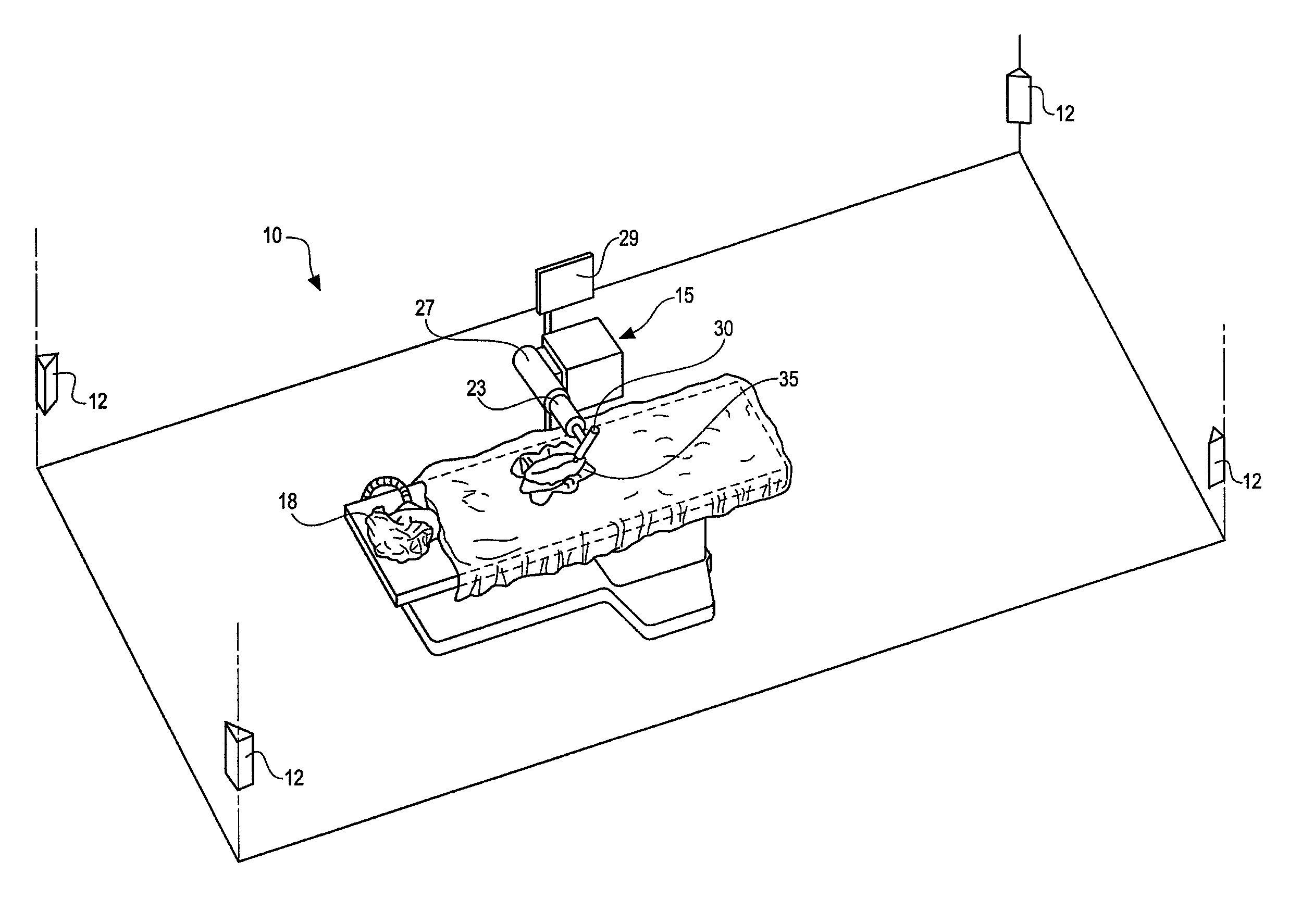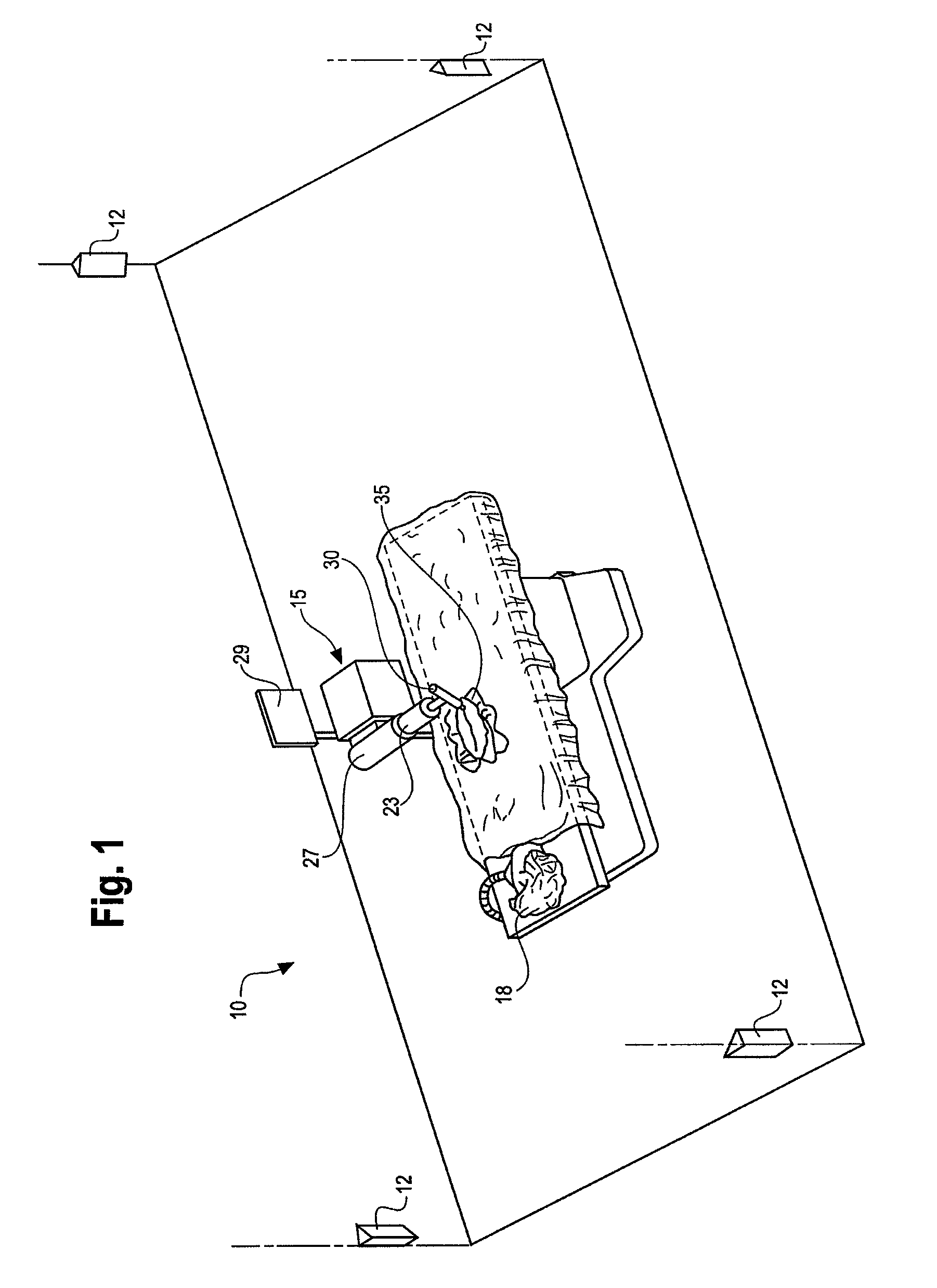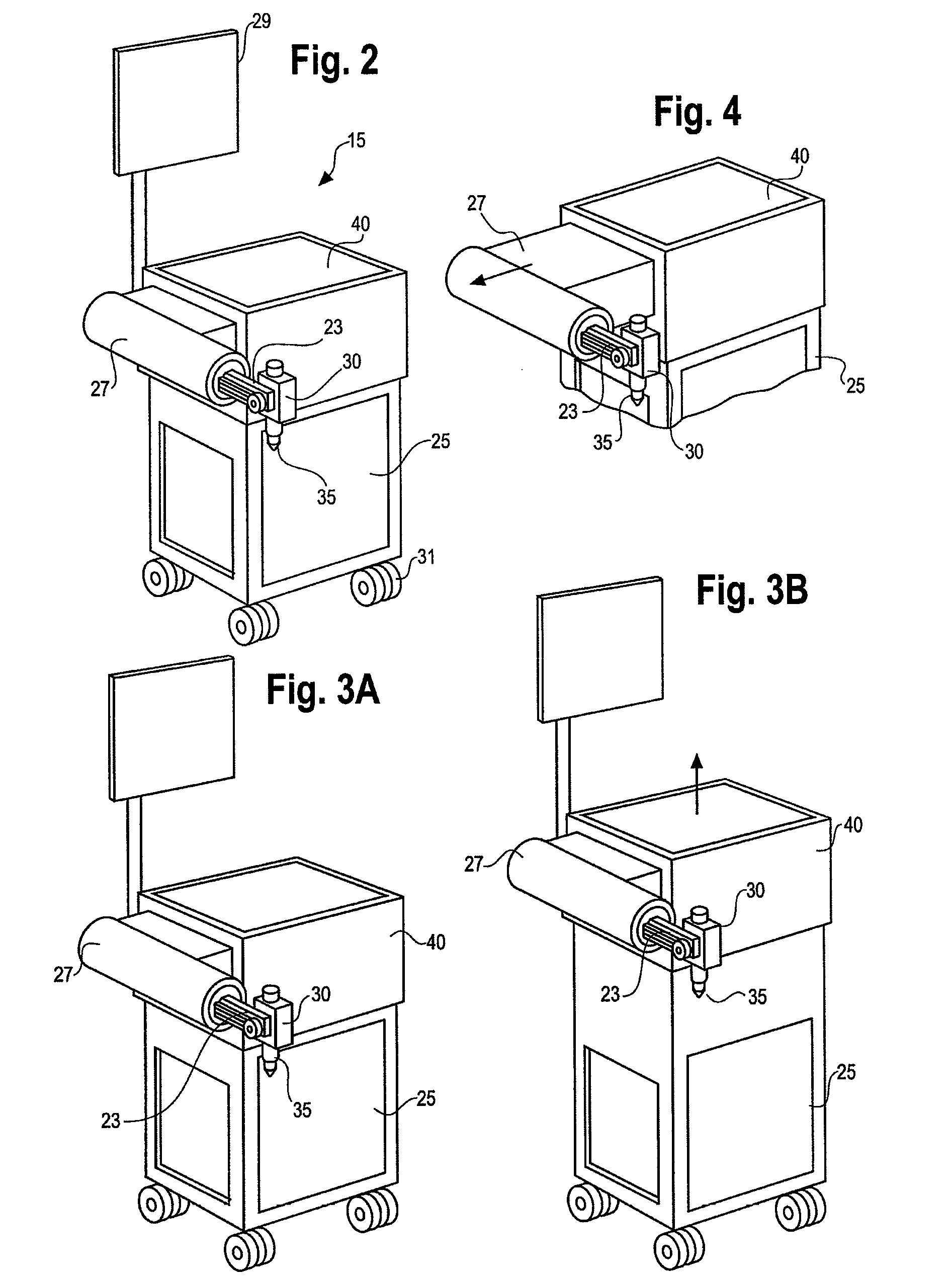Method and system for performing invasive medical procedures using a surgical robot
a robotic and invasive technology, applied in the direction of electric controllers, instruments, ignition automatic control, etc., can solve the problems of limited robotic assistance for surgical procedures, difficult precise and perpendicular drilling, and manual process that is both tedious and time-consuming
- Summary
- Abstract
- Description
- Claims
- Application Information
AI Technical Summary
Benefits of technology
Problems solved by technology
Method used
Image
Examples
Embodiment Construction
[0032]While the present invention is susceptible of embodiment in various forms, there is shown in the drawings and will hereinafter be described a presently preferred embodiment with the understanding that the present disclosure is to be considered an exemplification of the invention and is not intended to limit the invention to the specific embodiment illustrated. It should be further understood that the title of this section of this specification, namely, “Detailed Description Of The Invention”, relates to a requirement of the United States Patent Office, and does not imply, nor should be inferred to limit the subject matter disclosed herein.
[0033]Referring now to FIG. 1, it is seen that in one embodiment of the surgical robot system, a room 10 where an invasive procedure is occurring includes a surgical robot 15, a patient 18 and positioning sensors 12 is provided. Surgical robot 15 includes a display means 29, and a housing 27 which contains a robot arm 23. Robot arm 23 is atta...
PUM
 Login to View More
Login to View More Abstract
Description
Claims
Application Information
 Login to View More
Login to View More - R&D
- Intellectual Property
- Life Sciences
- Materials
- Tech Scout
- Unparalleled Data Quality
- Higher Quality Content
- 60% Fewer Hallucinations
Browse by: Latest US Patents, China's latest patents, Technical Efficacy Thesaurus, Application Domain, Technology Topic, Popular Technical Reports.
© 2025 PatSnap. All rights reserved.Legal|Privacy policy|Modern Slavery Act Transparency Statement|Sitemap|About US| Contact US: help@patsnap.com



